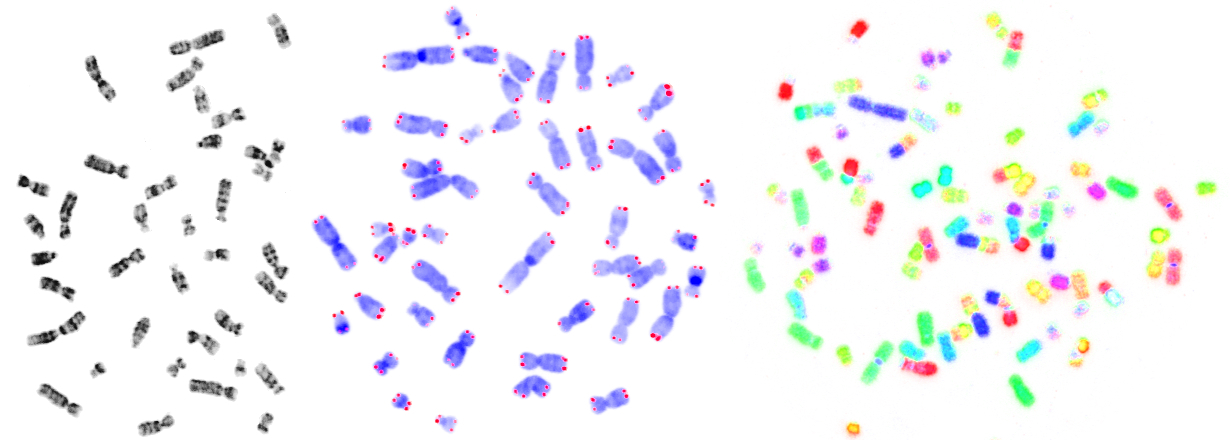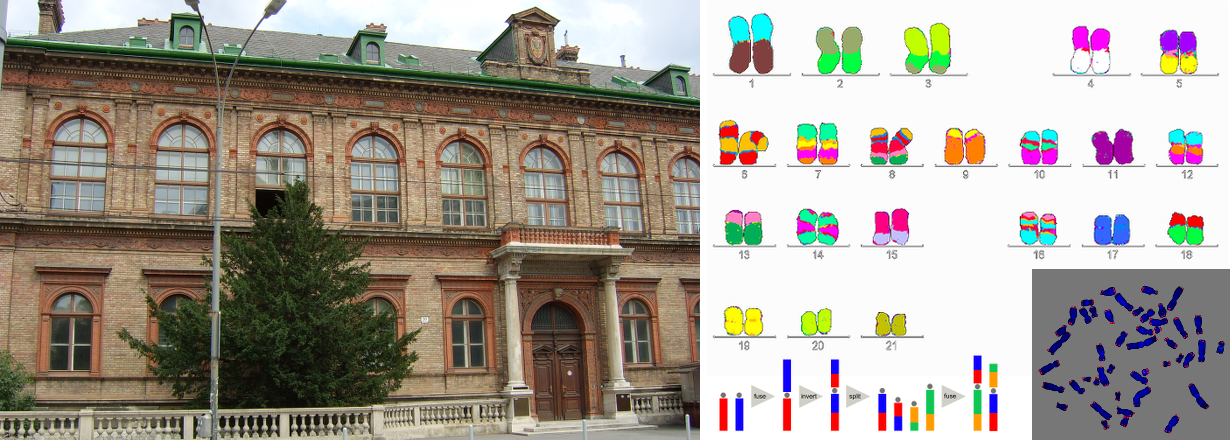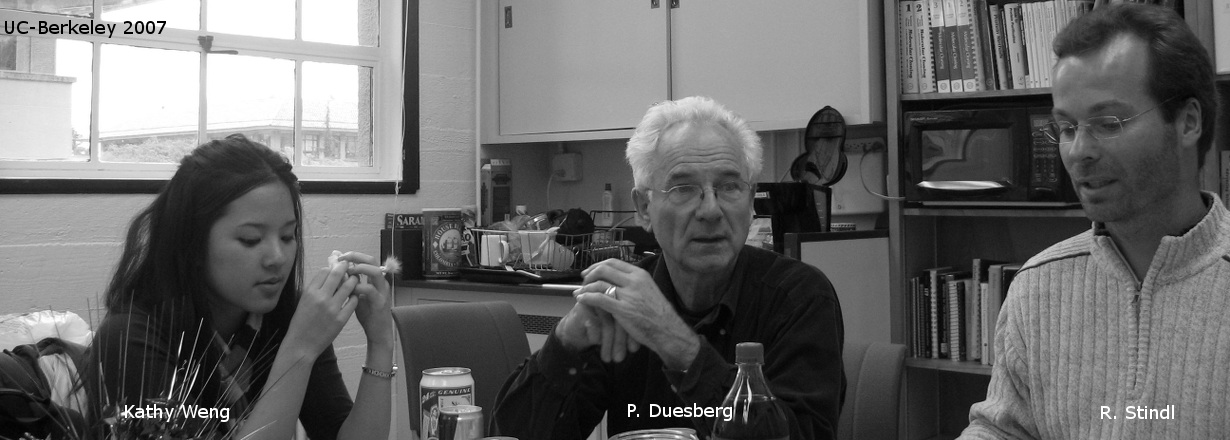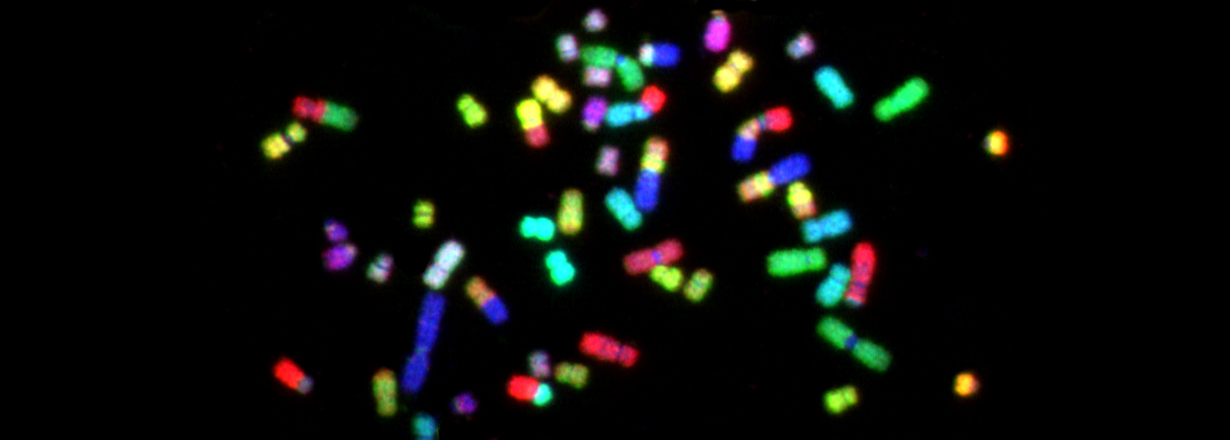Publications
Stindl, R. Telomere erosion: why low semen quality correlates with a shortened lifespan. Authorea, March 31 (2025), DOI: 10.22541/au.174345569.96927804/v2 Link
Stindl, R. Transgenerational telomere erosion in the monogametic sex: human telomeres progressively erode in the female germline and do not lengthen in aged testes. Molecular Cytogenetics, 12:37 (2019), DOI: 10.1186/s13039-019-0450-4 PubMed Link pdf
Stindl, R. Telomere-driven karyotypic and molecular convergence mimics the transmissibility of cancer in the Tasmanian devil. The Winnower, August 21 (2016), DOI: 10.15200/winn.147180.05742 Link pdf
Stindl, R. The paradoxical lengthening of telomeres in somatic tissues of the very old: Aging effect meets birth-cohort effect. Journal of Experimental Zoology Part B: Molecular and Developmental Evolution 326(4), 213-214 (2016), DOI: 10.1002/jez.b.22677 PubMed Link pdf
Stindl, R. The paradox of longer sperm telomeres in older men’s testes: a birth-cohort effect caused by transgenerational telomere erosion in the female germline. Molecular Cytogenetics 9:12 (2016), DOI: 10.1186/s13039-016-0224-1 PubMed Link pdf
Stindl, R. A puzzling pattern of cell-cycle-duration inheritance: just an artefact of changing growth conditions in vitro? The Winnower, July 14 (2015), DOI: 10.15200/winn.143689.92351 Link pdf
Stindl, R. The reanalysis of three large datasets uncovers progressive telomere erosion between healthy human generations and supports an 11-year-old model of telomere-driven macroevolution. The Winnower, June 5 (2015), DOI: 10.15200/winn.143357.76071 Link pdf
Stindl, R. Telomere erosion as an intrinsic mechanism of species extinction: the sudden and complete disappearance of the passenger pigeon 100 years ago. The Winnower, August 25 (2014), DOI: 10.15200/winn.140984.49964 Link pdf
Stindl, R. Molecular evidence for a multiregional development of the human lineage: A response to C. Stringer. The Winnower, July 27 (2014), DOI: 10.15200/winn.140846.61624 Link pdf
Stindl, R. Cancer: How many genes does it take? The Winnower, July 8 (2014), DOI: 10.15200/winn.140846.61574 Link pdf
Stindl, R. Parabiosis in aging research: Enigmatic youth factor versus ordinary stem cell transfusion effect. The Winnower, July 8 (2014), DOI: 10.15200/winn.140846.61523 Link pdf
Stindl, R. Confusing cause with effect: the correlation of chromosome Y loss in older men with elevated cancer and mortality risk. The Winnower, July 4 (2014), DOI: 10.15200/winn.140846.61409 Link pdf
Stindl, R. The telomeric sync model of speciation: species-wide telomere erosion triggers cycles of transposon-mediated genomic rearrangements, which underlie the saltatory appearance of nonadaptive characters. Naturwissenschaften 101(3), 163-86 (2014), DOI: 10.1007/s00114-014-1152-8 PubMed Link pdf (Springer open access)
Steinhauser, G. et al. (198 authors including Stindl, R.) Peer review versus editorial review and their role in innovative science. Theoretical Medicine and Bioethics 33(5), 359-76 (2012). PubMed Link
Stindl, R. Old fathers and long-telomered offspring: elongation of telomeres in the testes of older men versus transgenerational erosion of germline telomeres. Iranian Journal of Medical Hypotheses and Ideas 5, 8 (2011). Link pdf
Stindl, R., Stindl, W. Vanishing honey bees: Is the dying of adult worker bees a consequence of short telomeres and premature aging? Medical Hypotheses 75(4), 387-90 (2010). PubMed pdf
Stindl, R. Defining the steps that lead to cancer: Replicative telomere erosion, aneuploidy and an epigenetic maturation arrest of tissue stem cells. Medical Hypotheses 71, 126–140 (2008). PubMed Link pdf
Warshawsky I, Chernova OB, Hübner CA, Stindl R, Henneke M, Gal A, Natowicz MR. Multiplex ligation-dependent probe amplification for rapid detection of proteolipid protein 1 gene duplications and deletions in affected males and carrier females with Pelizaeus-Merzbacher disease. Clinical Chemistry 52(7), 1267-75 (2006). PubMed Link
Stindl, R. Tying it all together: telomeres, sexual size dimorphism and the gender gap in life expectancy. Medical Hypotheses 62(1), 151-154 (2004). PubMed pdf
Stindl, R. Is telomere erosion a mechanism of species extinction? Journal of Experimental Zoology Part B: Molecular and Developmental Evolution 302B, 111-120 (2004). PubMed Link pdf
Valent P, Fonatsch C, Stindl R, Schwarzinger I, Haas OA, Sperr WR, Geissler K, Lechner K. Normal bone marrow function over 6 years in a patient with dysplastic hematopoiesis and a complex karyotype. Leukemia Research 28(6), 651-5 (2004). PubMed Link
Duesberg, P., Stindl, R. & Hehlmann, R. Origin of multidrug resistance in cells with and without multidrug resistance genes: Chromosome reassortments catalyzed by aneuploidy. Proceedings of the National Academy of Sciences USA 98, 11283-11288 (2001). PubMed
Duesberg P, Stindl R, Li RH, Hehlmann R, Rasnick, D. Aneuploidy versus gene mutation as cause of cancer. Current Science, 81(5), 490-500 (2001). Link
Duesberg, P., Stindl, R. & Hehlmann, R. Explaining the high mutation rates of cancer cells to drug and multidrug resistance by chromosome reassortments that are catalyzed by aneuploidy. Proceedings of the National Academy of Sciences USA 97, 14295-14300 (2000). PubMed
Li, R., Sonik, A., Stindl, R., Rasnick, D. & Duesberg, P. Aneuploidy vs. gene mutation hypothesis of cancer: Recent study claims mutation but is found to support aneuploidy. Proceedings of the National Academy of Sciences USA 97, 3236-41 (2000). PubMed
Fiegl, M., Weltermann, A., Stindl, R., Fonatsch, C., Lechner, K., Gisslinger, H. Massive disseminated intravascular coagulation and hyperfibrinolysis in alveolar rhabdomyosarcoma: case report and review of the literature. Annals of Hematology 78, 335-338 (1999). PubMed
Stindl, R., Fiegl, M., Regele, H., Gisslinger, H., Breitenseher, M. J., Fonatsch, C. Alveolar rhabdomyosarcoma in a 68-year-old patient identified by cytogenetic analysis of bone marrow. Cancer Genetics & Cytogenetics 107, 43-47 (1998). PubMed pdf




